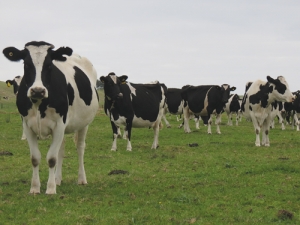Ospri brings Bovine TB testing in-house
The move to bring bovine TB testing in-house at Ospri officially started this month, as a team of 37 skilled and experienced technicians begin work with the disease eradication agency.
 Thanks to pest management, bovine tuberculosis levels in deer and cattle herds are at the lowest ever reported
Thanks to pest management, bovine tuberculosis levels in deer and cattle herds are at the lowest ever reported
The National Policy Direction for Pest Management has come into effect.
MPI’s director of biosecurity and animal welfare policy, Julie Collins, says established pests are estimated to cost New Zealand’s primary sector up to $3.3 billion annually.
“Even small improvements to New Zealand’s pest management system could save millions of dollars in the long term.”
“The National Direction will support national and regional management of challenging pest issues such as wilding conifers, by ensuring consistent approaches to the way rules are set across New Zealand and that landowner obligations are clearly signalled and underpinned by robust analysis.”
“The National Direction sets overarching requirements for national and regional pest and pathway management plans, and small-scale management programmes. It will ensure that these plans and programmes across New Zealand are clear and consistent, and provide the best value.”
National and regional pest management plans provide significant benefits for New Zealand. For example, the national pest management plan for bovine tuberculosis helps protect New Zealand’s dairy, beef and deer production, and enhances New Zealand’s reputation as a responsible producer of dairy and red meat products.
The plan has resulted in bovine tuberculosis levels in deer and cattle herds being the lowest ever reported.
The National Direction will also require all landowners in New Zealand, regardless of tenure, to manage pests spilling across boundaries onto neighbouring properties.
Those who will be directly affected by the National Direction include all regional councils and Kiwifruit Vine Health, the National Beekeepers Association, and OSPRI New Zealand. All these organisations have regional and national plans that manage pests and diseases that affect New Zealand.
A New Zealand dairy industry leader believes the free trade deal announced with India delivers wins for the sector.
The Coalition Government will need the support of at least one opposition party to ratify the free trade deal with India.
Primary sector leaders have welcomed the announcement of a Free Trade Agreement between India and New Zealand.
At Pāmu’s Kepler Farm in Manapouri, mating has wrapped up at the across-breed Beef Progeny Test.
More than 150 people turned up at Parliament recently to celebrate the 20th anniversary of Horticulture New Zealand (HortNZ).
Biosecurity New Zealand says Kiwis should continue to keep an eye out for yellow-legged hornets (Vespa velutina) over the holiday season.

OPINION: The release of the Natural Environment Bill and Planning Bill to replace the Resource Management Act is a red-letter day…
OPINION: Federated Farmers has launched a new campaign, swapping ‘The Twelve Days of Christmas’ for ‘The Twelve Pests of Christmas’ to…